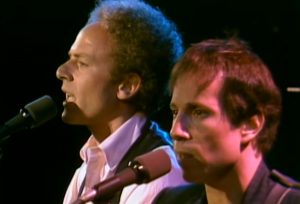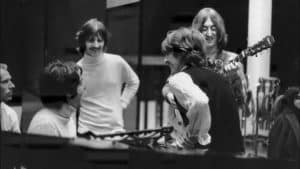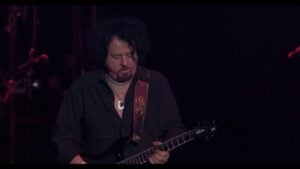We Look Behind The Inspirations Of These 11 Great Santana Songs

Photo by Robin Little/Redferns
Carlos Santana’s music is more than just a collection of songs—it’s a journey through diverse cultures and emotions. Since his electrifying performance at Woodstock in 1969, Santana has blended styles like blues, Afro-Latin rhythms, and rock into something uniquely his own. His sound is instantly recognizable, with a signature guitar tone that speaks to listeners worldwide.
With a career spanning decades, Santana has shaped the music industry in ways few others have. From his Rock and Roll Hall of Fame induction to being named one of Rolling Stone’s greatest guitarists, his influence is undeniable. Yet, beyond the accolades, it’s the stories behind his music that captivate fans.
Each song in Santana’s repertoire carries a story, a spark of inspiration that brought it to life. These tales reveal the depth of his artistry, showing how he channels personal experiences, cultural roots, and global influences into timeless tracks. Let’s dive into the inspirations behind 11 of his greatest songs.
“Maria Maria” – Supernatural (1999)
Santana shared with journalist Giselle Fernandez how “Maria Maria” came to life during an unforgettable evening. He recounted how Wyclef Jean began creating the song right in front of him, crafting both the melody and lyrics with striking spontaneity. Santana described the experience vividly, saying, “My face was like a chart, with music and with lyrics.”
The song pays homage to Maria, the iconic character from West Side Story. Its lyrics reflect her struggles, drawing a parallel between her story and the themes of the track. This connection adds a layer of depth, blending cultural references with universal emotions.
“Maria Maria” became more than just a song; it emerged as a tribute to resilience and identity. Its fusion of storytelling and Santana’s signature sound made it an enduring hit, resonating with audiences across generations.
“Oye Cómo Va” – Abraxas (1970)
In a conversation with PRS Guitars, Santana opened up about the profound impact legendary musicians like Tito Puente and B.B. King had on his artistry. He shared how these icons encouraged him with words like, “Walk like a giant. You’re one of us.” Santana credits their guidance and support as a source of his confidence and drive.
Santana sees himself as a representative of the artists he admires, embracing the idea that “I am what I love.” This perspective shapes his music, blending the influences of his heroes with his own unique style. Their encouragement gave him the conviction to honor their legacy while creating something personal.
“Oye Como Va” is a perfect example of this. Originally composed by Tito Puente, Santana infused the track with his distinct sound, adding layers of his identity while respecting its roots. The result is a timeless classic that bridges cultures and showcases his role as both a student and a pioneer.
“Jingo” – Santana (1969)
In a 2019 NPR interview, Santana reflected on how deeply African music has shaped his artistry. He described African rhythms and melodies as rich with nutrients that bring hope and courage, ultimately creating joy. These elements serve as the foundation for much of his work, including the iconic track “Jingo.”
Santana emphasized that the music he loves—from the sounds of Cuba to Puerto Rico and other islands—all traces back to Africa. This connection forms the backbone of his style, uniting global influences with a shared heritage of rhythm and spirit.
Through “Jingo,” Santana aimed to highlight the transformative power of African-inspired music. He envisioned these sounds as “mystical medicine” capable of healing a troubled world, using rhythm to inspire unity and resilience.
“Everybody’s Everything” – Santana III (1971)
Carlos Santana’s mastery of rhythm shines brightly in “Everybody’s Everything.” This energetic track, featured on Santana III, is a testament to his ability to weave powerful sounds into something unforgettable. Its creation is deeply rooted in Santana’s appreciation for rhythm and bold instrumentation.
According to Songfacts, Santana found inspiration in Tower of Power’s dynamic horn section. The vibrant energy of their sound struck a chord with him, compelling him to craft a piece that would incorporate those very horns. This collaboration added a unique flair to the track, elevating its rhythmic intensity.
The result was “Everybody’s Everything,” a song bursting with life and groove. Santana’s decision to include Tower of Power’s horns proved to be a stroke of genius, showcasing his skill in blending influences to create something uniquely his own.
“Joy” – Blessings and Miracles (2021)
“Joy,” a standout track from Santana’s 2021 album Blessings and Miracles, reflects a theme close to his heart. The word itself embodies the essence of the album, encapsulating the uplifting and transformative power of music. For Santana, joy is not just an emotion but a guiding force in his artistry.
In a 1992 interview with Whoopi Goldberg, Santana shared his belief in music’s ability to inspire compassion. He explained, “Music is what reminds us of compassion… When you hear good music, it pulls you away [from life], and when you pull away, that’s only when you can have compassion.” These words reveal the deep spiritual connection that fuels his creativity.
This philosophy resonates throughout Santana’s work, especially in “Joy”. The song captures his vision of music as a healing and transcendent experience, reminding listeners of the beauty and power found in compassion and connection.
“Do You Remember Me” – In Search of Mona Lisa (2019)
Santana’s 2019 track “Do You Remember Me” is deeply tied to his first encounter with Leonardo da Vinci’s Mona Lisa. According to Santana.com, the iconic artwork inspired both the song and the album as a whole. Its influence lingered with him long after the initial viewing.
Months later, the Mona Lisa continued to haunt him. Santana shared that the painting appeared in his nightmares, following him through his dreams. This surreal experience became a turning point in his creative process, blending visual art with musical inspiration.
One night, Santana awoke from a vivid dream with the lyrics of “Do You Remember Me” etched in his memory. The song, born from this unique experience, reflects the deep impact that art—both visual and musical—can have on the soul.
“Smooth” – Supernatural (1999)
“Smooth,” from Santana’s 1999 album Supernatural, marked a major moment in his career. Often seen as a rebirth, the album reintroduced Santana to the world, attracting more attention than even his famous Woodstock performance in 1969.
The song was born out of a collaboration between Santana, Rob Thomas, and Itaal Shur. Together, they crafted a track that became an instant hit, with its unforgettable rhythm and passionate energy. The song’s lyrics focus on a lover who both confounds and fascinates the musician.
“Smooth” stands as a testament to Santana’s ability to blend genres and collaborate with fresh talent. The track not only revived his career but also solidified his lasting influence in the music world.
“Samba Pa Ti” – Abraxas (1970)
In a conversation with Mojo Magazine, Santana shared the inspiration behind “Samba Pa Ti.” He explained that his struggle to express emotions verbally often led to frustration. However, with this instrumental track, he was able to communicate his feelings in a way that words couldn’t capture.
Interestingly, Santana’s connection to Fleetwood Mac played a role in his creative process. He often attended their live performances, deeply impressed by their music. This admiration, particularly for Peter Green’s songwriting, influenced Santana’s approach to blending blues with his own Latin rock style.
“Samba Pa Ti” marked a breakthrough for Santana, allowing him to express what he had struggled to say before. The track, which remains one of his most heartfelt, conveyed his emotions purely through his guitar, reaching listeners without needing a single word.
“Black Magic Woman” – Abraxas (1970)
“Black Magic Woman,” featured on Santana’s Abraxas album, is often remembered as a defining track in his career. However, it’s actually a reimagined version of Fleetwood Mac’s 1968 blues song “I Loved Another Woman,” written by Peter Green. This connection reveals Santana’s hidden admiration for Fleetwood Mac.
Santana’s affinity for Fleetwood Mac wasn’t widely known at the time. He regularly attended their performances, as revealed in The Guitar Greats by John Tobler and Stuart Grundy. Santana was deeply inspired by their musical prowess, which influenced his own sound.
His appreciation for Fleetwood Mac’s music helped shape “Black Magic Woman” into a distinctive fusion of blues and Latin rock. Santana’s ability to transform the original song into something uniquely his own shows the depth of his musical influences.
“Whiter Shade of Pale” – Blessings and Miracles (2021)
Carlos Santana’s admiration for Stevie Winwood led to a collaborative effort on the 2021 track “Whiter Shade of Pale.” Santana expressed his deep love for Winwood, describing him as an artist “meant for all seasons.” This admiration was a driving force in Santana’s decision to join him on this project.
In an interview with Evan Toth, Santana explained that spirituality played a significant role in his collaboration with Winwood. The spiritual essence of their music became a core element in Blessings and Miracles, the album featuring this track.
Santana also shared his desire to bring a fresh, sultry touch to a classic. By blending Winwood’s soulful vocals with his own unique sound, Santana aimed to reinterpret the timeless tune while adding a bit of “sexiness” to it.
“Los Invisibles” – Africa Speaks (2019)
The opening track from Carlos Santana’s 2019 album Africa Speaks, “Los Invisibles,” is sung entirely in Yoruba. Santana revealed in an interview with Stereogum that he had always wanted to produce a song in this language. He had been inspired ever since releasing “Jingo,” which reflects his deep connection to African rhythms.
Santana emphasized the roots of Latin music, which, like all music, traces its origins to African percussion. With Africa Speaks, he sought to honor the African influence on modern music. The concept for “Los Invisibles” came from this understanding of Africa as the “mother of music.”
In creating the song, Santana felt a message from Africa itself. He said the music was meant to inspire hope and courage, offering encouragement to listeners through its powerful rhythms and spiritual essence.






















